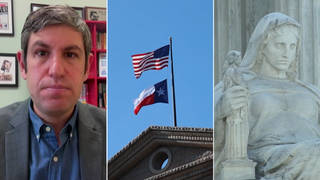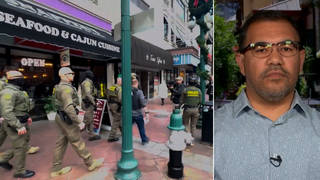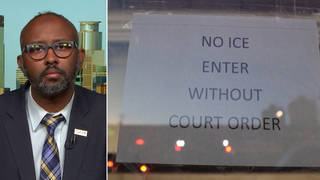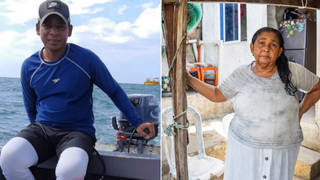
As the 2000 Summer Olympics opened in Sydney a few hours ago, the world watched a spectacular show of lights, music and dance telling the story of Australia’s history. Or one version of it anyway. Sydney put on its best multicultural face by using traditional Aboriginal myth and music as well as brightly costumed migrant communities to color the opening ceremony. And while the corporate sponsored gala was taking place, indigenous people, migrants, students and anti-globalization activists mobilized in many different parts of Sydney to voice their dissent.
Aborigines took advantage of the international media spotlight to show the world how they have been stripped of their land, denied their culture, had their children taken away and, most recently, been refused an apology by the prime minister.
Today several thousand Aborigines marched in Sydney — some from as far away as 2,000 miles. One demonstration formed a human chain along the road outside the Sydney airport. Another act of protest was the celebration of a traditional Aboriginal ceremony called a Corobory, which was held at the so-called Aboriginal Tent Embassy in downtown Sydney. Another group camped at nearby Botany Bay, where Captain James Cook colonized Australia in 1770. There were also anti-globalization demonstrations against some of the world’s largest multinationals on board as Olympic sponsors, including Nike, McDonald’s, and Coca-Cola.
And as the Sydney Olympics gets underway, Prime Minister John Howard’s government is using the Olympics to justify sweeping new powers allowing the military to suppress domestic unrest on the streets. Visitors to Sydney for the Olympics will be greeted by Black Hawk helicopters, New South Wales state police, tens of thousands of private security guards and volunteers with powers to search and detain people. Floating just offshore were U.S. warships. Perhaps the most disturbing aspect of this new militarization of the Sydney streets are the new laws passed which give federal troops shoot-to-kill orders.
Guests:
- Kim Bullimore, an Aboriginal organizer with the Indigenous Student Network as well as the Democratic Socialist Party in Sydney.
- Joel Bray, a student organizer with the Indigenous Student Network.
- Damien Lawson, a researcher with the Western Suburbs Legal Center in Melbourne.
Related link:










Media Options